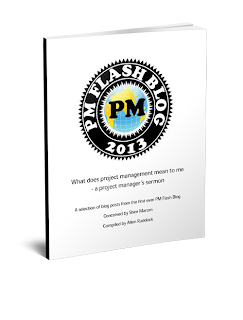Spacecraft projects are pretty tricky risk management regimes. Consider:
"If anything goes wrong there's no way for anyone to intercede"That's the feeling in the Juno project office about the injection procedure of the Juno project spacecraft into Jupiter's orbit, as reported in this essay. The PMO is led by Rick Nybakken who has said this regarding risk responses to the orbit maneuver:
"We haven't studied too much in terms of where we end up [if there is a failure], because we are focused on success and not failure"In other words, there's really no Plan B, much less Plan C. Either the mission is successful re being captured by Jupiter and eased into a productive orbit, or there's a miss, and really most of the mission objectives re Jupiter are not obtainable.
Bummer! $1billion at stake. Most of the money has been spent. Either the value return is really spectacular or pretty much nil. Talk about two discrete outcomes are really nothing in between.
NOT so fast!
Yes, the money has been spent, but on what? I'll bet -- without knowing the details -- that risk management has been hard at work on reliability, redundancy, and sensors of all kinds. I'll bet the PMO knows before it pushes the button whether it's likely to work.
Since they can't do risk management in real time, and they can do little once operations begin, it all has to be anticipated and worked into various failure analyses with work-arounds available in space. I'll bet they spent a fortune on risk management on the ground so that its unavailability in space is of minimal worry.
In other words you work in the domain you have, not the one you would like to have.
Read in the library at Square Peg Consulting about these books I've written
Buy them at any online book retailer!
Read my contribution to the Flashblog

